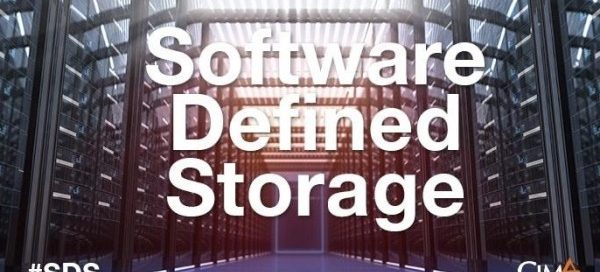Today's storage administrators are surrounded by new and conflicting challenges on all sides. The exponential growth of business data has created new levels of analytics opportunities, but admins who continue to rely on the same old storage technology to manage this new data are just as likely to be overwhelmed by it as they are to draw value from it. Adding new storage capacity on an ad hoc basis is inefficient and costly, and usually ends up creating a very complex storage environment, made up of various different pieces, that can be very difficult to manage.
In order to balance their ability to respond to data growth with their ability to keep storage costs and complexity down, storage administrators need a new approach, based on transformative new storage technology. That's where Software Defined Storage (SDS) can help. In this post, the first in a three-post series on the subject, we'll provide a quick introduction to SDS technology, including a look at what is, and how it can benefit your business.
What is Software Defined Storage?
Is this just another tech buzzword or is it something I need to care about? From the simplest perspective, Software Defined Storage refers to the concept of establishing storage management capabilities at the software level, separate from the various hardware elements that actually make up the storage environment. As a result, SDS allows storage administrators to cut across separate storage silos and manage the entire environment from behind a single pane of glass.
SDS is just one example of what makes up the current trend of the Software Defined Data Center. When used together with technologies like computing virtualization and software-defined networking, SDS can help organizations everywhere establish a smarter, more efficient data center.
What are the benefits of Software Defined Storage?
Virtualize, consolidate and automate
Using storage virtualization, your organization can make storage resources easier to manage, and allow for the implementation of new advanced storage features. In addition, consolidating the same amount of storage workloads in a smaller footprint can help you cut down on costs and complexity, while also leaving you well situated to handle future data growth. Finally, removing manual tasks from your storage environment will save you time and resources, while also making it easier for a small team of storage administrators to manage your entire environment.
Flexible scalability
As the amount of data you need to take into your storage systems grows, implementing SDS ensures that you’ll no longer have to take the approach of simply lumping more hardware on to your existing storage environment. Instead, by capitalizing on the latest in flash, tape and cloud-based storage technologies, you can scale up to make sure your organization gets the storage capacity it needs, without having to contribute to additional levels of cost or complexity.
Make the most of data across your entire storage environment
Instead of replacing your existing storage environment, SDS helps you bring together the old and the new, in order to make the most of both. This means taking advantage of new storage technologies to implement high levels of performance, allowing you to take full advantage of the possibilities presented by big data and analytics. At the same time, doing away with data silos allows you to implement an enterprise-wide storage management platform, meaning that you will always be able to find the data you need and capitalize on it, no matter where that data resides within your organization.
So Now What?
To sum it simply, Software Defined Storage provides a smarter approach to storing data; one that's perfectly tuned for the needs of the modern enterprise. To learn more, make sure to keep up with our blog or contact us today to learn how we can help you make the most of what SDS has to offer.


Leave a comment!